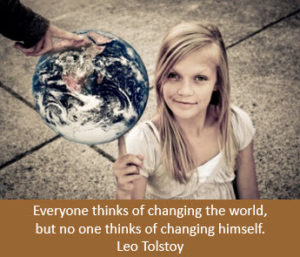The book, Switch – How To Change Things When Change Is Hard, by Chip and Dan Heath offers excellent insight into the process of change both in your personal and professional life.
They identify three ‘surprises’ about change that are not really all that surprising, particularly if you have the time to think about change. The problem is that most of us are so busy doing – with family, career and other responsibilities, that we have very little time to think.
When was the last time you spent a day (or hour) thinking about the direction of your life?

In their book, the Heath brothers identify the need to direct your willpower through crystal-clear direction. It’s difficult to decide to do something if you are fuzzy on what needs to be done. Directing your willpower can be as simple as breaking down what you need to do into a list of concrete steps.
Make a List.
Secondly, they speak about the need to motivate your emotions or passion to embrace the change. This is where some good old fashioned self-talk can be really helpful. We can undermine our own success by focusing on all the reasons why we can’t do something or by thinking about all the obstacles we have to overcome. If we can motivate our emotions so we are ‘charged up’ to tackle the change, it can make all the difference in the world.
Get Charged Up.
Thirdly, we need to shape the path of change by focusing on the environment within which the change needs to take place. So that may mean not purchasing certain foods if you are trying to make a nutrition change. Or cancelling cable if you want to change your ‘couch potato status’. Creating an environment where successful change is easier, is just plain smart.
Create a Supportive Environment
While they are the first to admit that their framework for change is not complete, it certainly is a starting point for successfully bringing change into your life.
One of the ideas that I really liked was their counter-intuitive proposal about what you decide to change in your life.
When we consider change, most of us look at what is going wrong in our lives not what is going right. But the Heath’s propose to begin the change process by looking at the bright spots in your life.
Look at what is working well and build from there. They suggest that you ask the question –
“What’s working, and how can I do more of it?”
Instead of being problem-focused we need to be solution-focused and use the bright spots in our lives to “illuminate the road map for action and spark the hope that change is possible.”
This is a major shift in thinking in our problem-focused world. We are all naturally inclined to be problems solvers and focus on what is not working. We even take pride – and put it on our resumes – ‘problem solver’.
Imagine if your child came home with a range of marks. How would you react? Inevitably, we would all focus on the lower ones – ‘what’s wrong?’, not on the higher ones – ‘what’s right and working well?’
And don’t we take this approach with our own lives? We look at our desire to improve our health and we look at the ten pounds we have to lose, or the junk food we have to cut out of our diet. Instead, the real challenge should be to look at our lives and make a candid assessment of what is working well and begin to build from there.
Sometimes it is hard to see the bright spots because we are so used to looking at the negatives!
So when it comes to brain health – there are five areas that should be focused on:
- Physical Activity,
- Mental Activity,
- Socialization,
- Spirituality, and
- Nutrition.
Each of these areas deserves some thought…and using the Switch approach you can ask yourself the question:
What is working well in the physical activity area and how can I do more of it?
Ideally, you should be doing aerobic exercise five (5) times a week. If that is your goal, and you find that you are too sedentary, focus on getting together with a friend to attend an exercise program. This can be a lot of fun and not even ‘feel’ like exercise.
Or increase by a little bit what you are already doing. If you enjoy a Zumba class at the gym once a week, try and make it twice a week.
Taking this approach in each of the areas and asking the question of what is working well in my life that supports a brain-healthy lifestyle is more proactive than stressing about lack of exercise or poor diet.
This is not a stick your head in the sand approach but a practical way to make changes that last!




0 Comments